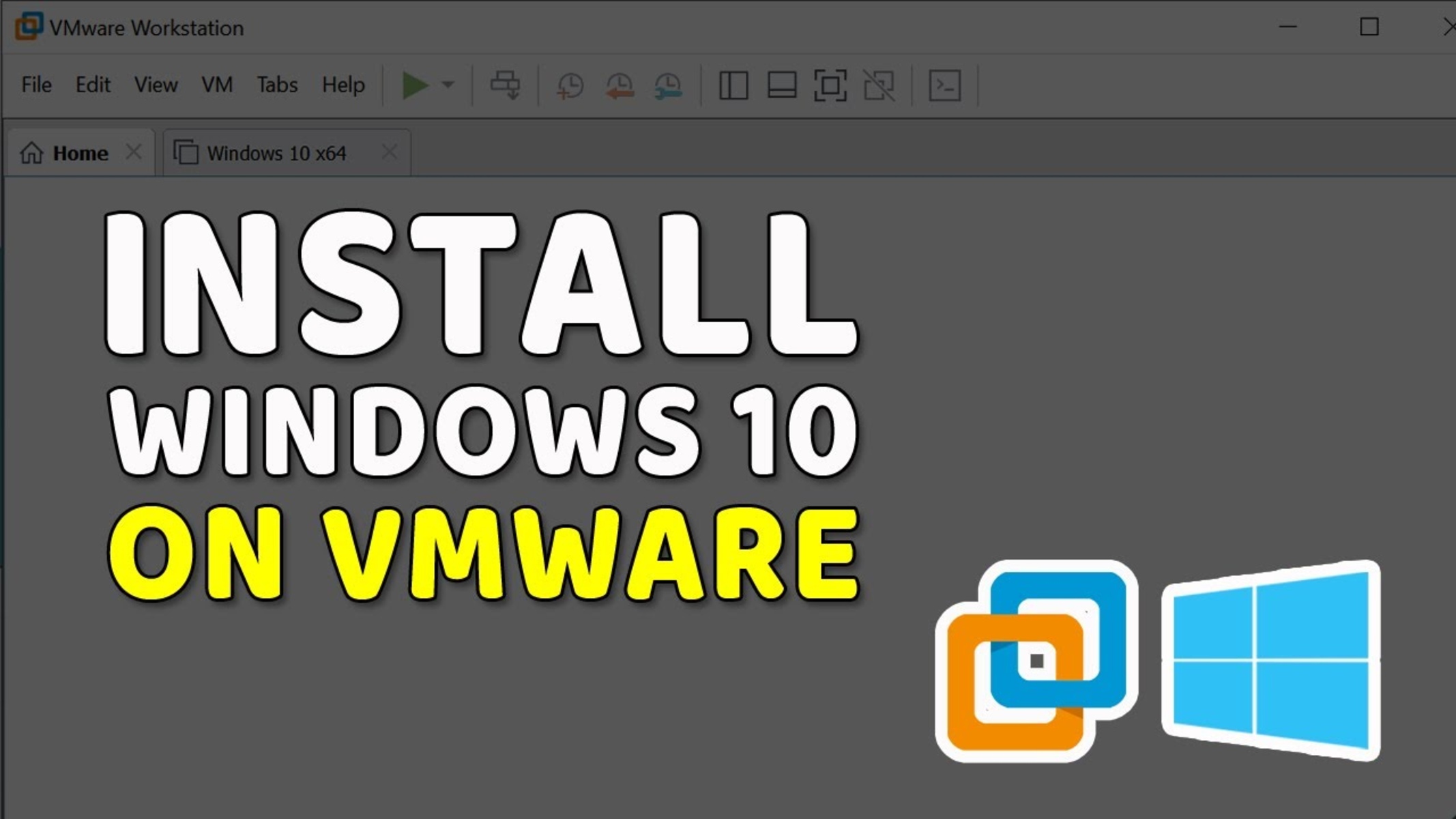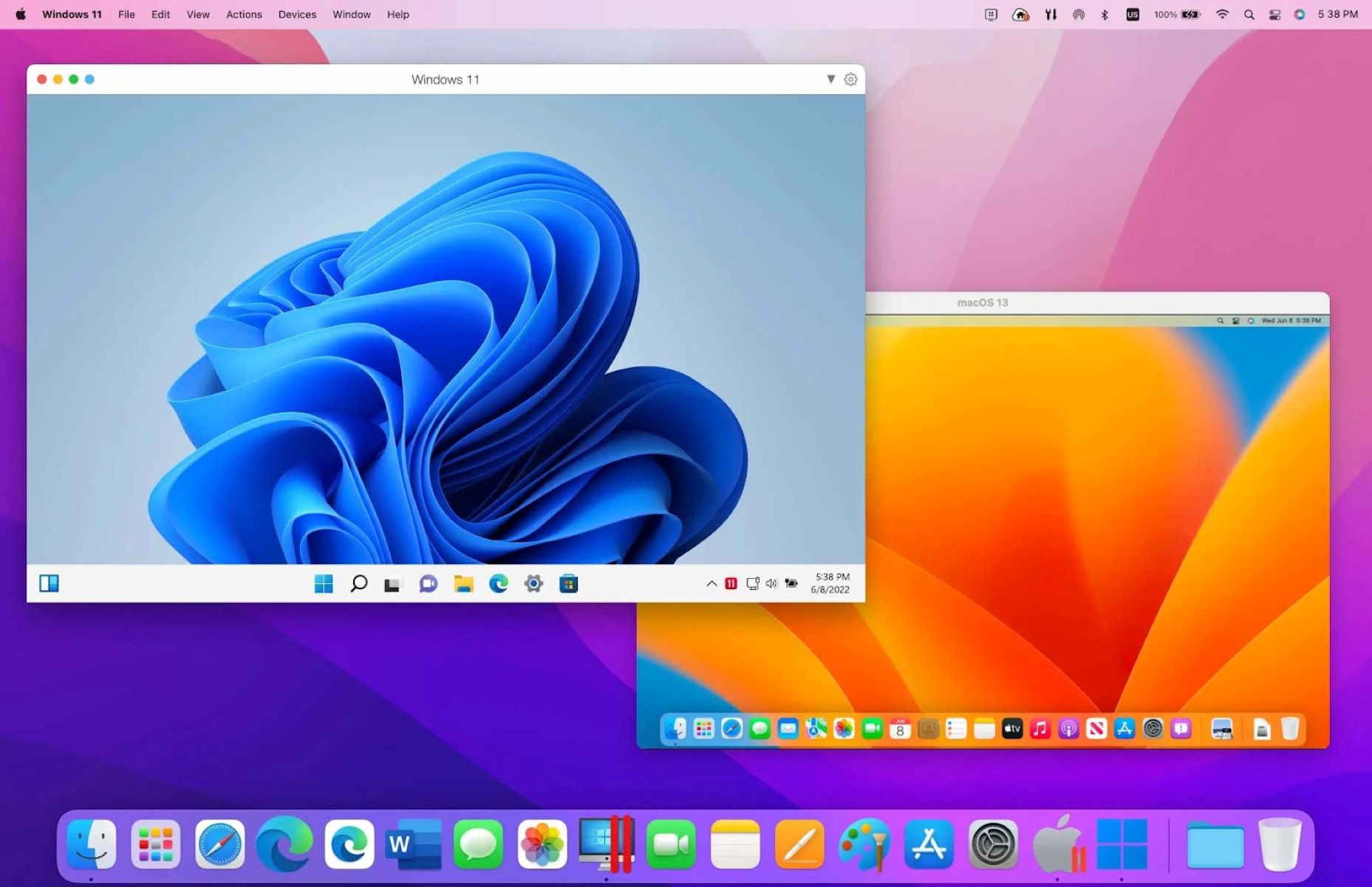Introduction
Welcome to our guide on how to share a virtual machine (VM) in VMware Workstation. VMware Workstation is a powerful virtualization software that allows you to run multiple operating systems on a single physical machine. Sharing a VM can be useful for collaborative work, file sharing, or accessing resources from different operating systems within your virtual environment.
In this tutorial, we will walk you through the process of setting up and configuring shared folders in VMware Workstation, enabling seamless file sharing between your host operating system and the virtual machine. Whether you are a developer, sysadmin, or simply an enthusiast exploring different operating systems, this guide will provide you with the necessary steps to facilitate smooth and efficient collaboration within your virtual environment.
Before we begin, make sure you have VMware Workstation installed on your host machine and have already set up the virtual machine you wish to share. It’s also important to note that the steps in this guide may vary slightly depending on the version of VMware Workstation you are using. However, the fundamental concepts and functionalities remain the same across different versions.
Now, let’s dive into the process of sharing a virtual machine in VMware Workstation, so you can harness the power of collaboration and easy file access within your virtual environment. Strap in and get ready to explore the seamless world of VM sharing!
Setting Up the VM
Before we can begin sharing a virtual machine in VMware Workstation, we need to ensure that the VM is properly set up. If you already have a virtual machine created, you can skip to the next section. If not, follow the steps below to set up your VM:
- Create a New Virtual Machine: Launch VMware Workstation and click on the “New Virtual Machine” option. This will open the VMware Virtual Machine Wizard, which will guide you through the process of creating a new VM.
- Select the Installation Method: Choose whether you want to install the operating system from a disc or an image file. If you have an ISO file or physical installation disc, select the corresponding option.
- Choose the Guest Operating System: Select the guest operating system you want to install on the virtual machine. This could be Windows, Linux, macOS, or any other compatible operating system.
- Allocate Resources: Specify the amount of RAM, CPU cores, and disk space you want to allocate to the VM. Ensure that these resources are sufficient for the guest operating system and applications you plan to use.
- Configure Network Settings: Choose the networking options for your VM. You can either select bridged networking to allow the VM to connect directly to the network, or choose NAT (Network Address Translation) for a more isolated network environment.
- Customize Hardware: In this step, you can customize additional hardware settings such as display, sound, USB devices, and more. Adjust these settings based on your requirements.
- Finish Setup: Review the configuration summary and click “Finish” to create the new virtual machine.
Once the virtual machine is set up, you are ready to proceed to the next section to enable sharing in VMware Workstation.
Enabling Sharing in VMware Workstation
Now that you have your virtual machine set up, the next step is to enable sharing in VMware Workstation. Enabling sharing allows you to seamlessly share files and folders between the host operating system and the virtual machine. To enable sharing, follow these steps:
- Power Off the Virtual Machine: Before we can configure sharing settings, make sure the virtual machine is powered off.
- Select the Virtual Machine: In the VMware Workstation interface, locate the virtual machine you want to enable sharing for and select it.
- Go to VM Settings: With the virtual machine selected, click on “Edit virtual machine settings” to access the VM settings.
- Open the Options Tab: In the VM settings window, navigate to the “Options” tab.
- Select Shared Folders: Under the “Options” tab, click on “Shared Folders” to view and configure the shared folder settings.
- Enable Sharing: In the Shared Folders settings, click on the “Enable” button to enable sharing for the virtual machine.
- Choose Sharing Type: VMware Workstation offers two types of sharing – “Always enabled” and “Enabled until the VM is powered off”. Select the appropriate option based on your requirements.
- Apply the Changes: Once you have chosen the sharing type, click on the “Add” button to configure specific shared folders.
- Add Shared Folders: In the Add Shared Folder dialog box, click on the “Browse” button to select the folder you want to share with the virtual machine.
- Set Sharing Permissions: Specify the sharing permissions for the selected folder. You can choose to make it read-only or read-write for the virtual machine.
- Apply the Changes: After setting the sharing permissions, click “OK” to apply the changes and add the shared folder.
- Close the Settings: Once you have added the shared folders, click “OK” to close the VM settings window.
With sharing enabled and folders configured, you are now ready to access the shared folders from within the virtual machine. In the next section, we will explore how to configure shared folders for seamless file access.
Configuring Shared Folders
After enabling sharing in VMware Workstation, the next step is to configure the shared folders on your virtual machine. Configuring shared folders allows you to define which folders from the host operating system should be accessible within the virtual machine. Follow these steps to configure shared folders:
- Power On the Virtual Machine: Start the virtual machine you enabled sharing for.
- Login to the Guest OS: Once the virtual machine has booted up, login to the guest operating system using your credentials.
- Locate the Shared Folders: In the guest operating system, navigate to the VMware Tools folder. The location of this folder may vary depending on the guest operating system.
- Run the VMware Tools Installation: Open the VMware Tools folder and run the installation file to install VMware Tools on the guest OS. This step is necessary to enable shared folder functionality.
- Install VMware Tools: Follow the prompts of the VMware Tools installation wizard to complete the installation. Once the installation is finished, restart the virtual machine.
- Access the Shared Folders: Once the virtual machine has restarted, go to the VMware Workstation menu and click on “VM” > “Settings” for the virtual machine.
- Configure Shared Folders: In the VM settings window, navigate to the “Options” tab, select “Shared Folders”, and click on the “Add” button to configure shared folders.
- Choose Folders to Share: In the Add Shared Folder dialog box, click on the “Browse” button to select folders from the host operating system that you want to share with the virtual machine.
- Set Sharing Permissions: Specify the sharing permissions for the selected folders. You can choose to make them read-only or read-write within the virtual machine.
- Apply the Changes: After setting the sharing permissions, click “OK” to apply the changes and add the shared folders.
- Access Shared Folders: The shared folders should now be accessible from within the virtual machine. You can find them by navigating to the designated directory or using the path specified during the configuration.
By configuring shared folders, you can easily transfer files between the host and guest operating systems, facilitating seamless file access and collaboration within your virtual environment.
Adjusting Share Settings
Once you have configured shared folders in your virtual machine, you may need to adjust certain share settings to further optimize your sharing experience. VMware Workstation provides several options to customize share settings based on your specific requirements. Follow these steps to adjust the share settings:
- Power On the Virtual Machine: Start the virtual machine that has the shared folders configured.
- Login to the Guest OS: Once the virtual machine has booted up, login to the guest operating system using your credentials.
- Open VMware Tools: In the guest operating system, locate and open the VMware Tools application.
- Access Share Settings: In the VMware Tools window, navigate to the “Manage” tab and click on the “Shared Folders” option.
- Select Share Options: In the Shared Folders settings, you can customize various share options. Select the desired options based on your requirements:
- Folder Sharing: Choose whether you want to enable or disable folder sharing with the host operating system.
- Mapping Drives: Decide whether you want to map shared folders as network drives within the guest operating system.
- Automount: Select if you want to automatically mount shared folders on the guest OS startup.
- Writable: Determine whether shared folders should be read-only or writable within the guest OS.
- Apply the Changes: After adjusting the share settings, click on the “OK” or “Apply” button to save the changes.
- Restart the Virtual Machine: In some cases, you may need to restart the virtual machine for the share settings to take effect.
By adjusting the share settings, you can fine-tune the behavior and functionality of shared folders in your virtual machine, ensuring a seamless and efficient file sharing experience.
Accessing Shared Folders from the VM
After setting up and configuring shared folders in VMware Workstation, accessing them from within the virtual machine is straightforward. Follow these steps to access shared folders:
- Power On the Virtual Machine: Start the virtual machine where the shared folders are configured.
- Login to the Guest OS: Once the virtual machine has booted up, login to the guest operating system using your credentials.
- Navigate to Shared Folders: In the guest operating system, open the file explorer or any file management tool.
- Locate the Shared Folders: Look for the shared folders under the network locations or virtual machine’s shared folders directory.
- Access Shared Folders: Double-click on the shared folder you want to access to open it and view its contents.
Alternatively, you can also map shared folders as network drives for easy access. Here’s how:
- Right-click on “Computer” or “This PC” in the file explorer: Select the option to map a network drive.
- Choose Drive Letter: Assign a drive letter that you want to use for the mapped network drive.
- Specify Folder Path: Enter the path to the shared folder in the virtual machine. This can be obtained from the shared folder settings in VMware Workstation.
- Enable Reconnect at Logon: Check the box to automatically reconnect the mapped drive at each login.
- Click Finish: Click on the “Finish” button to complete the mapping process.
Once the shared folder is accessed or the network drive is mapped, you can work with the files and folders just like you would with any other location in the operating system. You can copy files, edit documents, or perform any desired operations within the shared folders.
It’s important to note that the availability and accessibility of shared folders are dependent on the VMware Workstation host and guest operating system configurations. Ensure that the host machine is powered on and the virtual machine is connected to the same network for seamless access to the shared folders.
With shared folders properly accessed and utilized, you can now enjoy the convenience of seamlessly sharing files and collaborating between the host and guest operating systems within your virtual machine setup.

























